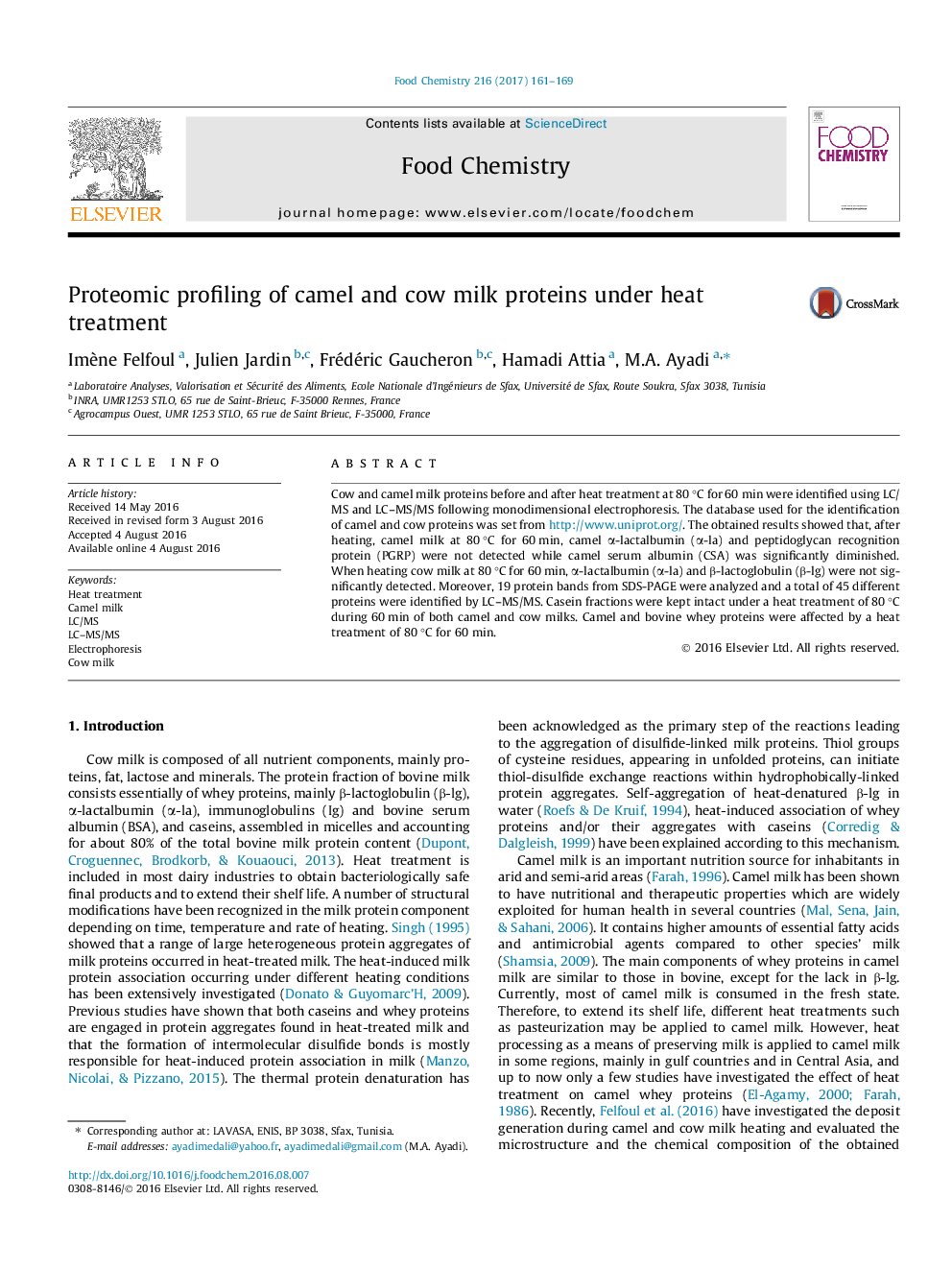| Article ID | Journal | Published Year | Pages | File Type |
|---|---|---|---|---|
| 1183062 | Food Chemistry | 2017 | 9 Pages |
•For camel milk, α-lactalbumin and peptidoglycan recognition protein were the proteins most affected by heat treatment.•For cow milk, β-lactoglobulin and α-lactalbumin disappeared completely from the gel patterns.•After heating caseins were kept intact to heat treatment for camel and cow milks.•Bovine serum albumin disappeared in heated bovine milk while camel serum albumin existed in heated camel milk.
Cow and camel milk proteins before and after heat treatment at 80 °C for 60 min were identified using LC/MS and LC–MS/MS following monodimensional electrophoresis. The database used for the identification of camel and cow proteins was set from http://www.uniprot.org/. The obtained results showed that, after heating, camel milk at 80 °C for 60 min, camel α-lactalbumin (α-la) and peptidoglycan recognition protein (PGRP) were not detected while camel serum albumin (CSA) was significantly diminished. When heating cow milk at 80 °C for 60 min, α-lactalbumin (α-la) and β-lactoglobulin (β-lg) were not significantly detected. Moreover, 19 protein bands from SDS-PAGE were analyzed and a total of 45 different proteins were identified by LC–MS/MS. Casein fractions were kept intact under a heat treatment of 80 °C during 60 min of both camel and cow milks. Camel and bovine whey proteins were affected by a heat treatment of 80 °C for 60 min.
